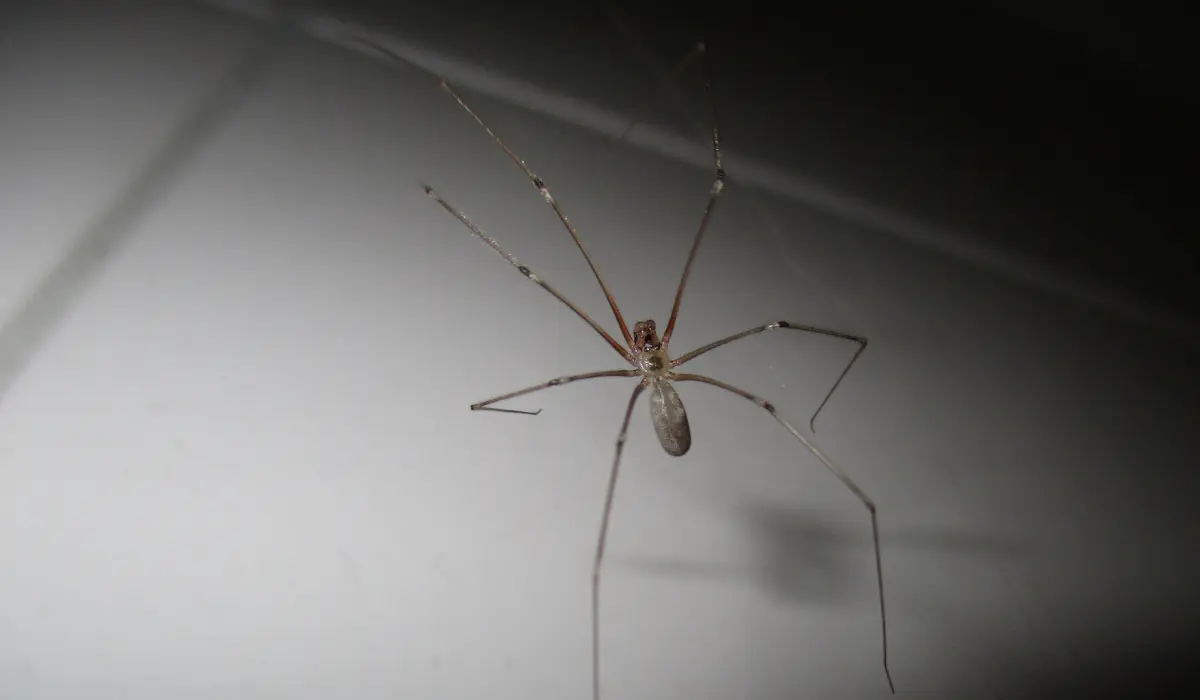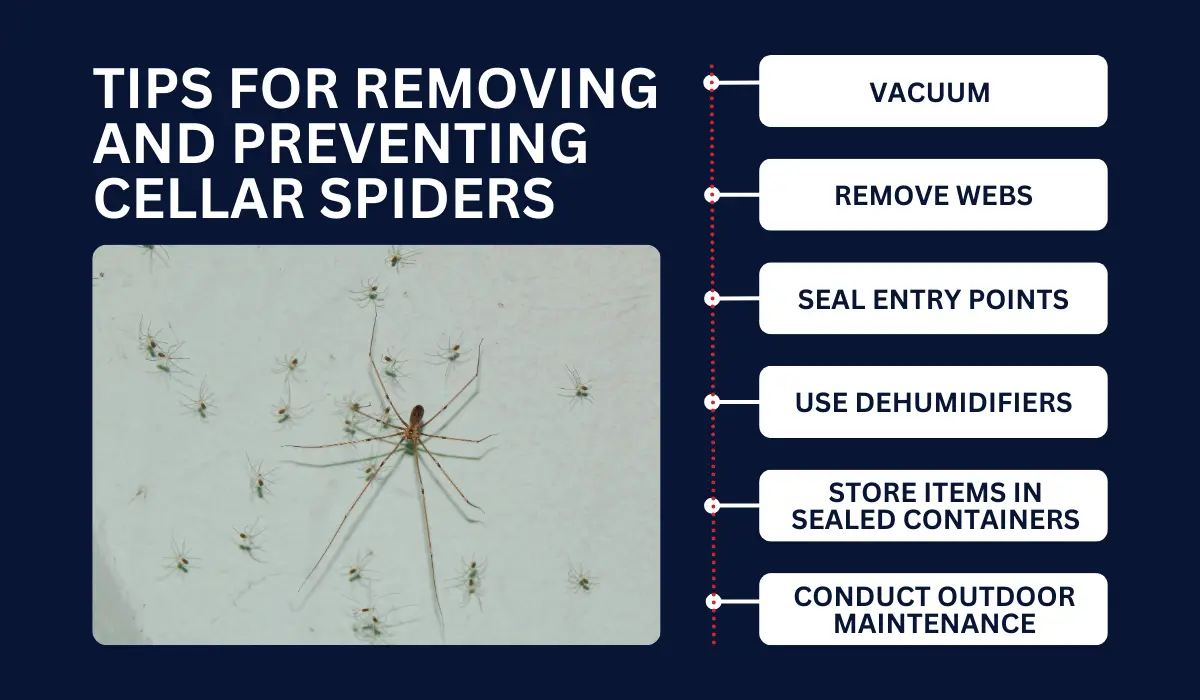
Ever noticed those long-legged spiders hanging around in the corners of basements and cellars in Louisiana?
These are cellar spiders, known for their distinctive slender bodies and incredibly long legs. Often mistaken for daddy long-legs, cellar spiders are actually beneficial creatures that help control other insect populations in your home.
Are you curious about how to manage their presence in your home? Keep reading to learn about the world of cellar spiders in Louisiana and uncover why they might be your unexpected ally.
Key Takeaways
- Cellar spiders in Louisiana, commonly misidentified as “daddy longlegs,” have long, thin legs and a small, cylindrical body, distinguishing them from similar arachnids.
- They prefer dark, cool, damp environments like basements and crawl spaces, where they can remain in their webs due to plentiful insect prey.
- Despite danger myths, cellar spiders do not harm humans and help control pest populations by preying on harmful insects.
WHAT ARE CELLAR SPIDERS?
All species of cellar spiders (family Pholcidae) are common house spiders in Louisiana. Their common name throughout the US, including Louisiana, is daddy longlegs. However, this is a misnomer.
Physical Characteristics
Two of the most common arachnids are the short-bodied cellar spiders and the long-bodied cellar spiders. They’re often mistaken for other similar-looking arthropods like the brown widow or harvestmen.
However, unlike harvestmen (or the true daddy long-legs), they have distinct physical features that make them easy to identify, like:
| Physical Characteristics | Description |
|---|---|
| Body Color | Light brown or gray |
| Legs | Long and thin legs |
| Mouthparts | Chelicerae, small but prominent for grasping and biting |
| Body Shape | Cylindrical, segmented |
| Size | Small body with a leg span that appears larger |
Where Do Cellar Spiders Live?
Cellar spiders prefer dark, cool, and damp environments. Unlike brown recluse spiders, they actively hunt within their old web but rarely need to move to a new location due to a surplus of trapped insects.
Critical behaviors and habitats for cellar spider identification include:
- Life Cycle: Undergoes several molts before reaching maturity
- Preferred Locations: Basements, attics, crawl spaces, garages, and crevices
- Webs: Messy and disorganized, often old
- Behavior: Typically found upside down in their web
- Interaction with Other Species: Predate on smaller insects
HOW TO MANAGE CELLAR SPIDERS AT HOME
As residents of Louisiana, you often encounter cellar spiders in their homes throughout the year. Over time, an unattended infestation can lead to overwhelming cobwebs.
To effectively manage cellar spider populations, you should:
- Act Early in Spring and Fall: These are the peak seasons for spiderling activity and growth.
- Routinely Inspect Homes: Regularly check basement corners, under furniture, and unused rooms for any signs of spider activity or egg sacs.
- Use Identification Guides: Learn to distinguish cellar spiders from other common spiders, such as the wolf spider or the orb weaver.
Tips for Removing and Preventing Cellar Spiders

Successful removal of cellar spiders requires a combination of physical removal techniques and preventive measures to stop future infestations. A well-maintained and clean environment is less attractive to these spiders.
To manage cellar spider populations, you can:
- Vacuum regularly by focusing on corners, ceilings, and other spider-friendly spaces.
- Remove webs frequently by destroying cobwebs to discourage them from returning to the same spots.
- Seal entry points by closing gaps in windows, doors, and foundations to prevent new spiders from entering.
- Use dehumidifiers to reduce moisture in basements and other spider-prone areas in the home.
- Store items in sealed containers to get rid of cellar spiders by cutting down hiding spots.
- Conduct outdoor maintenance by trimming vegetation away from the house to reduce spider access.
SHOULD YOU GET IN TOUCH WITH A PEST CONTROL PROFESSIONAL?
If you notice an unusual number of cellar spiders in your home, it might be time to contact pest control. These spiders often signify a larger insect problem since they feed on other pests.
Whether you’re in Baton Rouge or New Orleans, seeking expert help should be easy. For immediate intervention for a severe infestation, let Lajaunie’s spider control specialists tailor a solution that’s right for your home.
For more information about the areas we service, visit our location page.
Ever noticed those long-legged spiders hanging around in the corners of basements and cellars in Louisiana?
These are cellar spiders, known for their distinctive slender bodies and incredibly long legs. Often mistaken for daddy long-legs, cellar spiders are actually beneficial creatures that help control other insect populations in your home.
Are you curious about how to manage their presence in your home? Keep reading to learn about the world of cellar spiders in Louisiana and uncover why they might be your unexpected ally.